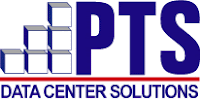
Servers are the largest energy consumer in the computer room and are just ahead of cooling as the single highest cost within the data center. They have the most potential to affect energy consumption in the data center. You can think of heat dissipation as an inverted pyramid, with the CPU, chipset, and server at the tip (actually on the bottom of the pyramid), followed by racks and rows in the middle, and finally the data center facility and infrastructure at the top of the pyramid (actually the bottom). In this scenario, the every reduction we can make at the server level will propagate upward, resulting in greater savings at the facility level.
The trick is to track power utilization against the supporting infrastructure’s redundant capacity, such that facility improvements can be forecasted in a reasonable manner. This is important since the rate of change of IT is high, while the ability of the facility to react is very slow. However, regardless of the rate of change, it is important to understand the peak energy demands for the facility and to maintain an appropriate extra capacity buffer between 15-20 percent above this peak to accommodate swings in demand.
Data center operators have to stop thinking about power and cooling as separate from IT performance. At PTS, we ‘walk-the-walk’, as well as ‘talk-the-talk’. We are one of the very few data center solutions providers that have facility engineers and architects sitting right next to our server, storage, and network engineers and architects. We think of data center solutions from a holistic approach.


